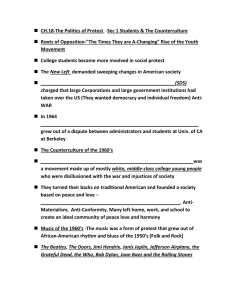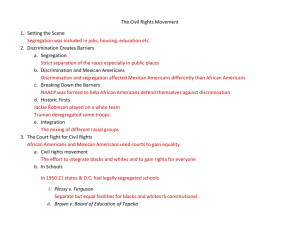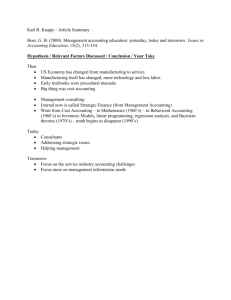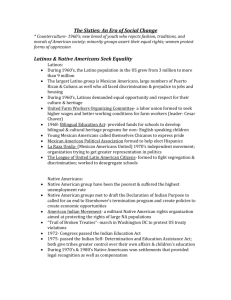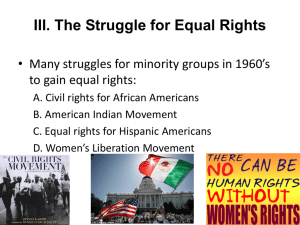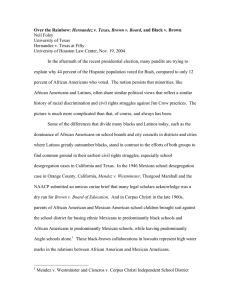Expanding Equality, 1960*s and Vietnam
advertisement
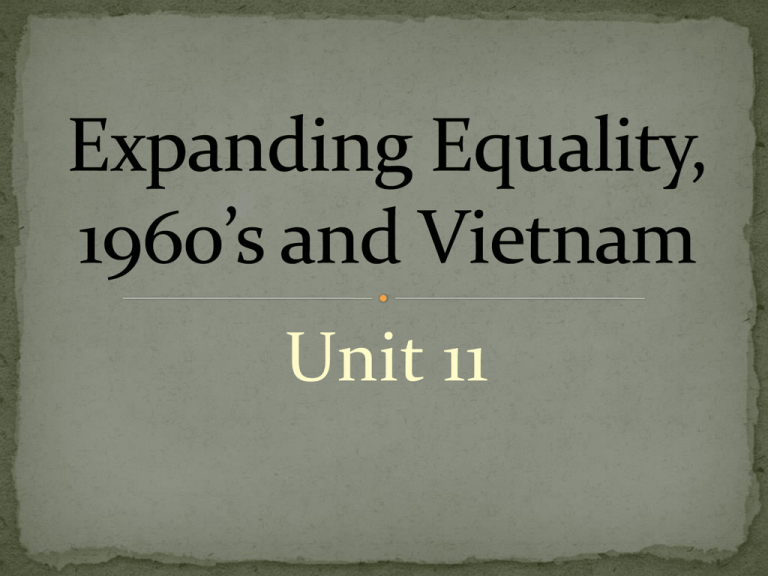
Unit 11 Unit 11 During the late 1960’s some African-American’s became more militant, felt non-violence wasn’t working fast enough Led to The Black Power Movement that believed African Americans should rely more on themselves -control their own communities to free themselves from the domination of white culture Searched for a new identity by rejecting American white culture and developing their own style, Afro haircuts and African based fashion -Created new groups like the Black Panthers who demanded equal opportunities and reparations for past oppression -Student Nonviolent Coordinating Committee barred white participation and wanted immediate action Black Muslims-believed African Americans should adopt Islam and form their own black state -Malcolm X –a leading black Muslim, believed that violence might be necessary to achieve equal rights, and wanted blacks to control their own businesses In the North, African Americans faced segregation in living patterns not state laws -most blacks were confined to ghettos -In 1968, African American frustration led to rioting in cities after the assassination of Dr. Martin Luther King Jr -Commission looked into cause of unrest and found a lack of job opportunities, urban poverty, and racism -Showed the country that a lot of work lay ahead to achieve equality In the 1960’s The Chicano Movement emerged in the US in which Mexican Americans sought to correct past discrimination and racism -began with migrant farm workers in California Cesar Chavez--fought for the rights of Mexican American migrant farm workers, to get better pay and working conditions -he started the United Farm Workers with Dolores Huerta who also wanted to extend aid to families of farm workers -they used nonviolent protests, nation wide boycotts, and hunger strikes until laws were passed Mexican Americans also struggled for equality in voting, employment and politics -Hector Perez Garciafought discrimination against Mexican Americans in public facilities and jobs -became the first MexicanAmerican to serve on the US Commission on Civil Rights The Chicano Mural Movement -Chicano Wall murals began as a celebration of Mexican American culture -Spread throughout US giving a visual presence for people who lacked representation in public life A series of court cases ended the Segregation of Mexican Americans in the US. These Court Cases expanded equal rights to more minorities. -Mendez v Westminster ISD (1947)—no segregation of MexicanAmerican children without specific state law -Delgado v Bastrop ISD (1948)-Segregation of Mexican-American children in schools in Texas is illegal -Hernandez v Texas (1954)—Mexican-Americans cannot be excluded in practice from juries, and given “class” protection under the 14th amendment -White v Register (1973)—Required single member voting districts so local groups could elect their own representatives -Edgewood v Kirby (1984)—states must revise its school funding system to increase funding for poorer districts The American Indian Movement (AIM)-began as a response to state sponsoring and control of reservations -states couldn’t provide necessary services so “Red Power” movement was created to raise respect in the US for Indians -Used the occupation of government monuments Alcatraz Island/Wounded Knee to bring attention -wanted federal govt help, use of term Native-American, and a respect for their heritage and against anti-Native American bias in the media The “Youth Culture” of the Sixties was created by the influences of the baby boom generation -In the 1960’s American youths rebelled against the conforming behavior of their parents and wanted greater personal freedoms -Challenged the materialism and establishment they saw in influencing American society Youth culture of the 1960’s was influenced by many generations of music, art and literature -The Beat Generation of the 1950’s rebelled against the conformity of their era and produced poets and writers, like Allen Ginsburg and Jack Kerouac who were forerunners of this new counterculture of the 60’s -music began to influence the young people beginning with Rock and Roll and Elvis Pressley in the 1950’s -In the 1960’s Joseph Heller and Kurt Vonnegut wrote books about the absurdity of armed conflict -Rock music and the Beatles helped to fuel the youth culture and antiwar movement of the 1960’s -Artists like Jackson Pollock and Andy Warhol created art rebelling against the mass consumer culture of the 1950’s Hippies became symbol for the youth movement in the 1960’s -had long hair, new fashions, experimented openly with drugs and sex, some even left mainstream society for self sufficient communities The “Youth Culture” of the Sixties also begins the antiwar movement during Vietnam -Led to the Twenty Sixth Amendment which lowered the voting age from 21 to 18 -The right to vote is given to all citizens 18 years & older
